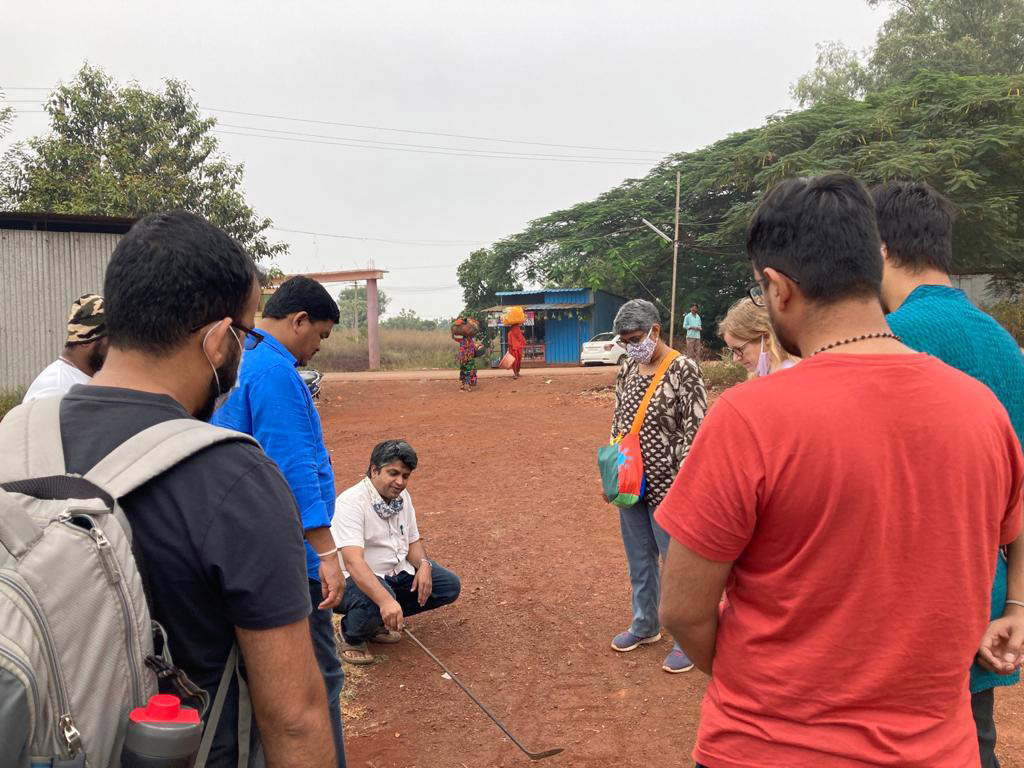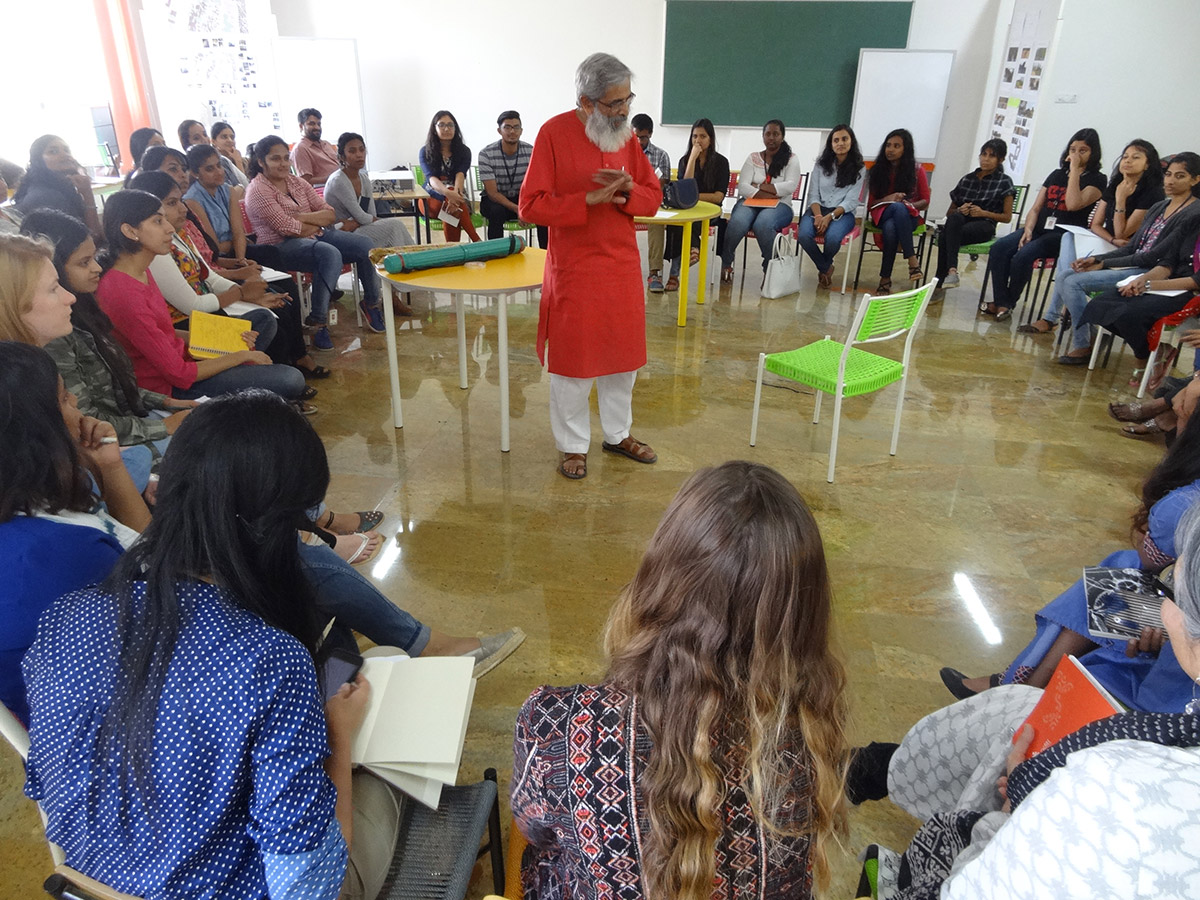“There is no logic that can be superimposed on the city; people make it, and it is to them, not buildings, that we must fit our plans.” - Jane Jacobs

Learning in the field with collaborators and partners of UNESCO Chair. Image Courtesy: Law, Environment & Planning, SMI
About the Programme
Public spaces are both built and open and include spaces such as streets, parks, marketplaces, transportation nodes, cultural institutions such as libraries and museums, community centers to mention a few. These are spaces that support diverse users, and ensure that people are included and supported regardless of cultural and socio-economic background, age, gender, physical ability, or political views. The encounters and interactions that take place in public spaces facilitate the making of a shared identity, and a sense of community. They are integral to the functioning of a community allowing for communication and mobility, sharing and distribution of resources and infrastructure, and providing access to livelihoods.
The role of the public space designer is that of an investigator, facilitator and curator who enables communities and stakeholders to shape their public spaces. Thus the design of these places are inherently transdisciplinary; anchored in participatory, and collaborative processes.
The M.Des (Public Space Design) challenges predominant practices that primarily focus on redevelopment of public spaces. The course does not require a background in architecture, design or planning background, and anybody with an interest in public spaces, community development or urbanism may apply provided they have an undergraduate education of four years or more.
The program cultivates an inquiry led approach sited in place-based contexts. Students will have opportunities to work with faculty and research labs on research projects during the course. Research that this program typically seeks to encourage focus on inclusion, justice, equity, resilience, and community well-being in public spaces considering the complexities that emerge from the interactions between policy, governance, design, and use.
Course Structure
- Disciplinary and Interdisciplinary studios
- Workshops
- Seminars
- Lines of Inquiries (Field work, Case Studies, Investigations, individual or Group Projects, Transdisciplinary Research)
- Theory and Understanding
- Independent Study
- Open Elective
- Practice
- Exhibitions
- Culminating Performances of Understanding (Portfolio, Transdisciplinary research, Projects, Colloquium, Capstone/Dissertation)
- Knowledge Enhancement (ability or skills)
Learning Approach
Learning at the postgraduate level is driven by the lines of inquiries that are enacted through studio-based learning, workshops, theoretical reflections and field work that are embedded in specific geographical and cultural contexts.
Program learning approaches include:
- A theoretical and conceptual knowledge of approaches to design, current issues and discourses related to public space
- Using tools to research context, analyze, synthesise and conceptualise art and design outcomes in public space and in the public realm
- Understanding methods of comprehensive studies in project and/or discourse in public space design
- Trans-disciplinary collaboration among peers, practitioners and community to facilitate greater inclusion in public space.
- Using real life opportunities to create and test interventions and processes in community spaces.
- Community informed sustainable practices that help protect natural resources and manage disasters.

Group Discussion in the Studio. Image Courtesy: Law, Environment & Planning, SMI
Capabilities
On successful completion of the course, graduates will have the following capabilities:
- To be sensitive towards regional perspectives, respect diversity and help design for just and inclusive communities
- To be able to critique constraints, question assumptions and limitations; think independently and strive for deeper engagement
- To be able to identify, explore, experiment with real and conceptual frameworks and develop innovative practice
- To be able to examine and engage in systematic enquiry of cultural, political, environmental, and historical contexts of space and place
- To be able to use participatory approaches to engage with communities
- To be able to select and use appropriate methods of research; understand, analyse, and synthesize information; communicate them effectively to the community and other stakeholders
- To be able to make informed choices and expand ideas of art, design, policy, and sustainability
- To be able to design, engage and manage safe, sustainable, and layered engagements for people with and in public space
Opportunities
Public Space Design plays a significant role in shaping our cities and communities. A participatory and inclusive approach to designing public spaces helps create an inclusive society offering a high quality of life. After the completion of the course, one could work in the architecture and planning sector enabling studios to engage with communities as part of their planning and design process. Graduates of the program may also choose to work with community organisations, policy think tanks, government agencies as consultants or researchers. The course also provides a strong foundation for those intending to take on doctoral studies in a related field.
People
Enquiries

Disciplinary Intersections
The program is informed by the following learning disciplines:
Cultural studies
Ecology and Environment
Environmental Graphics
Heritage Conservation
Landscape Design
Policy Studies and Environmental Law
Sociology
Spatial Design
Sustainability studies
Urban and Regional Planning
Urban Studies and Design
Research and Collaboration
LeNS Lab
Odde Research Center
Srishti Films
The UNESCO Chair in Culture, Habitat, and Sustainable Development
FAQs
Public Space Design is the design of spaces that are used by different living beings keeping all their needs in mind while designing the space. Public space comes in many forms: publicly owned parks, streets, and sidewalks, privately owned public spaces and temporary spaces that appear and disappear.
The discipline synthesizes spatial design practice with the natural, cultural, political, socio economic and historical contexts to arrive at outcomes that are equitable, inclusive, just and resilient. Public Space design is about keeping focus on “Public” while creating spaces that add value to the quality of life of an individual in a city. Public Space Design draws from different spatial design disciplines, and brings together public art, digital storytelling, policy, and planning.
Public spaces such as streets and parks to name a few, account for around one third of a city’s land area. These shared spaces have to deal with pressures of urbanization; environmental challenges due to growth and climate change and spatial contestations arising from transformations in community structures.
More than ever is there a need for effective public space design to allow for an effective engagement between the built and the open. It is in this domain that the quality of life is best expressed and experienced.
If you feel that public spaces can make a meaningful contribution to solving our problems of urbanism; if you believe that the achievement of good governance and equality depend on ample availability of public space and you are passionate about being involved in the design of public spaces that are inclusive; then you have the right aptitude to become a public space designer.
You will work with spatial designers, artists, public historians, policy makers and other professionals who are constantly pushing the boundaries of public space design The program will better inform your ability to design spaces, engage with discourses and formulate policies related to public space. You will have the opportunity to explore public space design through discourse and design with a strong emphasis on inclusion and sustainability.
You have an opportunity to build on your learning from your undergraduate degree through research, studios and workshops to develop and innovate new ways in which people’s experience of public spaces can be enriched.
- Employment in creative industries such as architecture, landscape design, interiors and urban design
- Employment in research and development organizations, NGOs & social enterprises working in the urban sector
- Graduates can become contemporary design practitioner, entrepreneur, design consultant or an academician
- Graduates could work with and have an active involvement in emerging domains such as public policy making and public space design and planning
The program also allows you to apply into a PhD program in a related area. Students interested in continuing with a PhD program can apply for the Integrated MDes PhD program. Further details can be found on our admissions page.
All admission and fee related information could be viewed on our admissions page.



